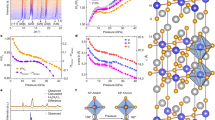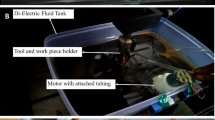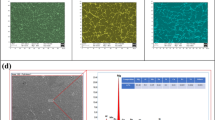Abstract
A CHANCE observation by one of us (H. G.) that if the die through which a wire was being drawn was simultaneously rotated the tension required was appreciably reduced, has led to results of considerable interest. The following series of values refer to an 80:20 cupro-nickel wire reduced from 0.073 in. to 0.0635 in. in diameter, that is, 24 per cent. A sintered tungsten carbide die of 6° taper was used, with ‘Oil-dag’, a suspension of colloidal graphite in oil, as a lubricant.
This is a preview of subscription content, access via your institution
Access options
Subscribe to this journal
Receive 51 print issues and online access
$199.00 per year
only $3.90 per issue
Buy this article
- Purchase on SpringerLink
- Instant access to full article PDF
Prices may be subject to local taxes which are calculated during checkout
Similar content being viewed by others
Author information
Authors and Affiliations
Rights and permissions
About this article
Cite this article
GREENWOOD, H., THOMPSON, F. Wires drawn through Rotating Dies. Nature 128, 152 (1931). https://doi.org/10.1038/128152a0
Issue date:
DOI: https://doi.org/10.1038/128152a0
This article is cited by
-
Effect of Tube Extrusion Expander Shear on Recrystallization Behavior, Texture Evolution, and Mechanical Properties of Hot Deformed Mg-3Al-1Zn Alloy
Journal of Materials Engineering and Performance (2023)



